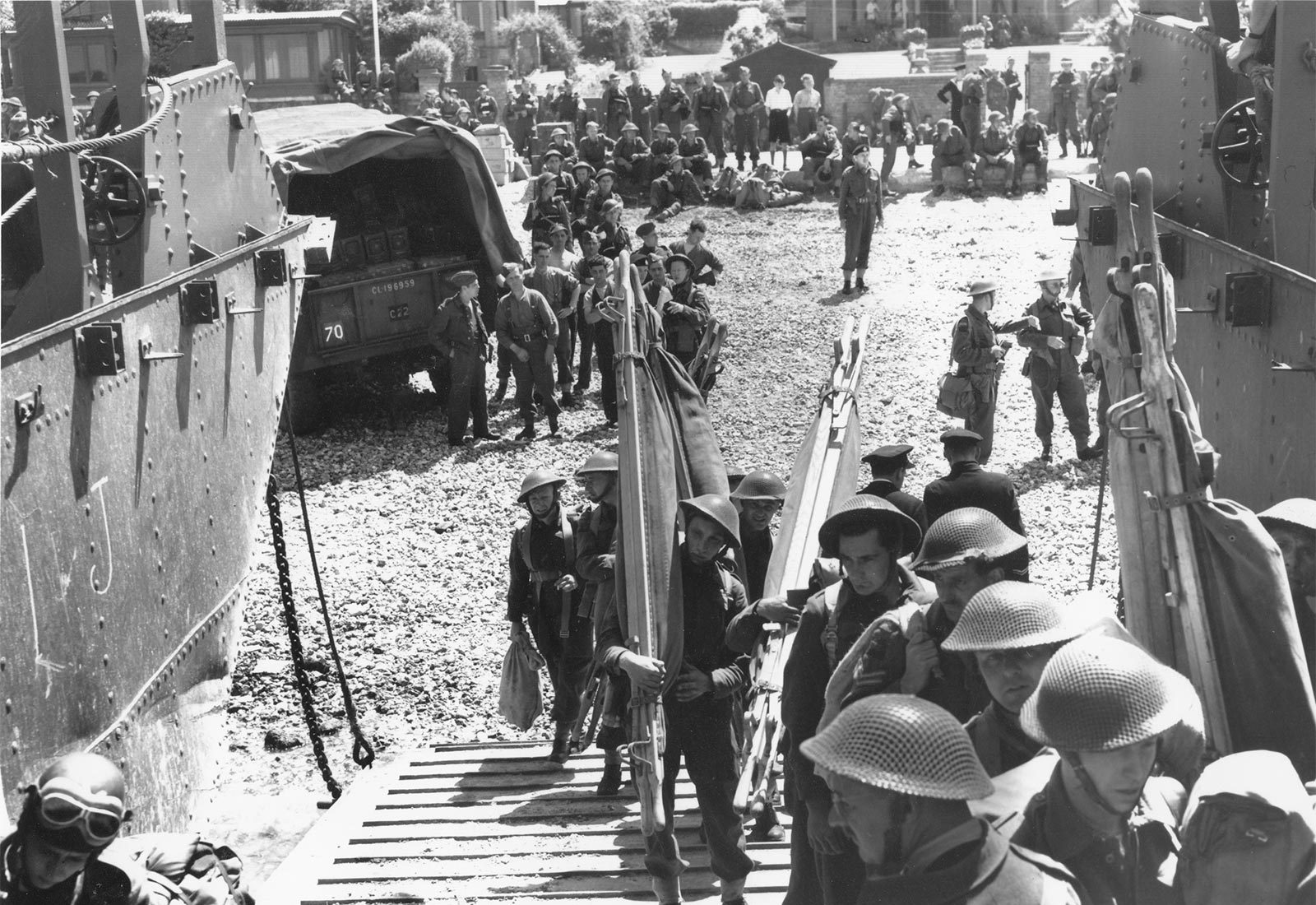Updated on 24 November 2021
Reading time: 2 minutes
The Dieppe Raid, bearing the unfortunate code name of Operation Jubilee, was carried out on 19 August 1942 with appalling casualties. It did at least provide valuable information on how not to carry out such amphibious operations, of which this was the first on any scale. Consisting mainly of Canadian troops, it was principally designed to test the German defences. With over 900 deaths among the Canadians alone, it fuelled German propaganda on the invincibility of their so-called ‘Atlantic Wall’.
PREPARATIONS
Churchill’s resonant words after Dunkirk, ‘We shall never surrender’, evoke the absolute commitment of the British Prime Minister to fight on, whatever the cost. Even with the entry of the United States into the war after the Japanese attack on Pearl Harbor, Germany remained the priority enemy over Japan. During the next two years the production and delivery of war material, planes, ships, landing craft, artillery and tanks reached awesome proportions and much of it had to cross the Atlantic from the United States and Canada before gathering in vast concealed encampments in Southern England. Air reconnaissance took millions of photographs of the European coastline; midget submarines lurked to take discreet photographs offshore, and samples onshore. A harvest of invaluable information on the dispositions of the Germans was gleaned by the Resistance, often at enormous risk to those involved.
Elements of two prefabricated harbours were being constructed and launched. Systematic bombing to cripple German industry, smash German cities, and hit oil fields began in 1943; after D-Day, the focus of bombing in France would be on slowing German reserves entering the battlefield area by taking out road and rail networks.
D-Day was planned for 5 June, keeping the 6 and 7 June as possibilities, as dates having the proper conjunction of a daylight landing after a night of the full moon (for paratroops), while seaborne troops would begin landing in daylight one hour after dead low tide and the break of day. The code name given to the largest amphibious operation of all time was – Overlord.
